Get PeakVisor App
Sign In
Search by GPS coordinates
- Latitude
- ° ' ''
- Longitude
- ° ' ''
- Units of Length

Yes
Cancel
Share ×

Scan the QR code and open PeakVisor on your phone
❤ Wishlist ×
Choose
Delete
Explore ancient beech forests, green pastures, hazelnut groves, and a lake teeming with birdlife. There are 10 named mountains in Riserva Naturale Regionale Lago di Vico. Monte Fogliano is the highest point. The most prominent mountain is Monte Venere.
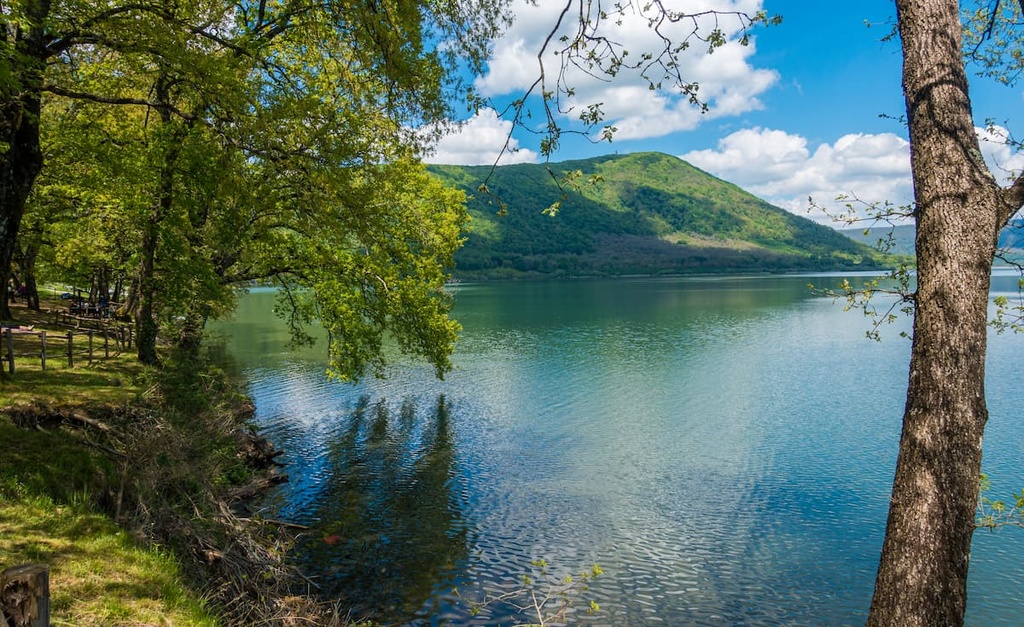
Established in 1982, Lake Vico Nature Reserve (Riserva Naturale Regionale Lago di Vico) was formed to protect environments and provide a natural balance to an area of great environmental importance, while also improving the local quality of life.
The park is part of the broader system of parks and nature reserves in the Italian region of Lazio. It spans an area of 41 sq. km/16 sq. mi and is situated in the province of Viterbo in Lazio, covering the municipalities of Caprarola and Rociglione.
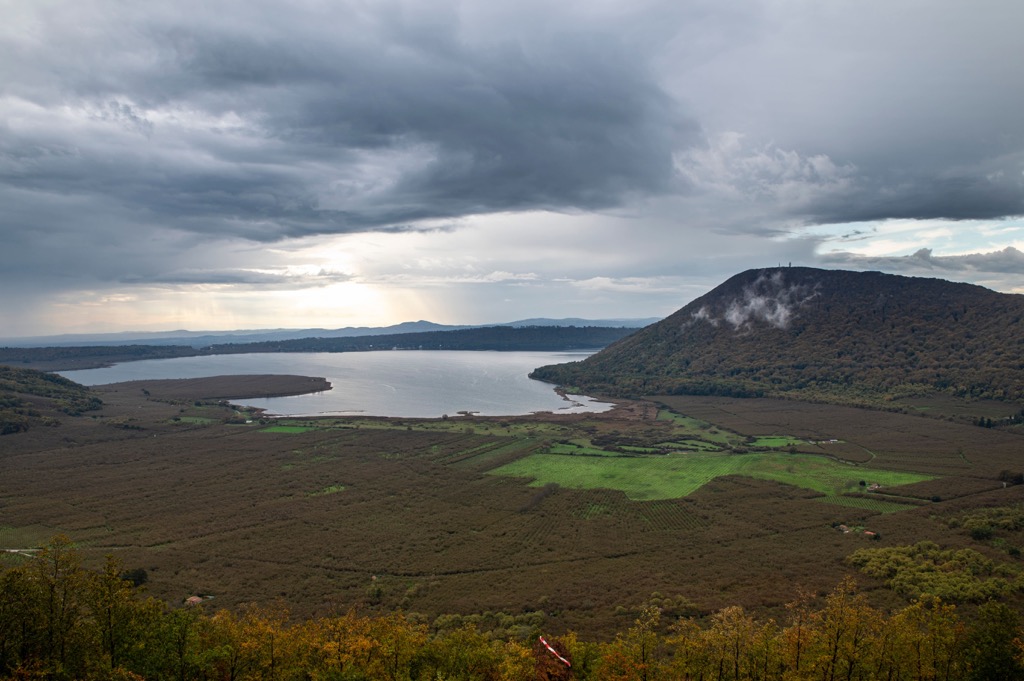
The park’s territory extends over the volcanic caldera of Vico and includes Lake Vico, a beautiful volcanic lake that is one of the best preserved in the region.
The borders of the Nature Reserve run largely along the ridge of the crater belt and enclose the lake itself and Monte Venere (858 m/2,814 ft) in a large basin.
The geology of Lake Vico and the surrounding area originates from volcanic activity from Monte Cimino at the end of the Pliocene period, which started around four and a half million years ago. The eruptions covered the clays and marine sands of the Tiber valley. The activity also spread ash and lapilli (little stones) over large distances, which accumulated and cemented, forming pyroclastic rocks.
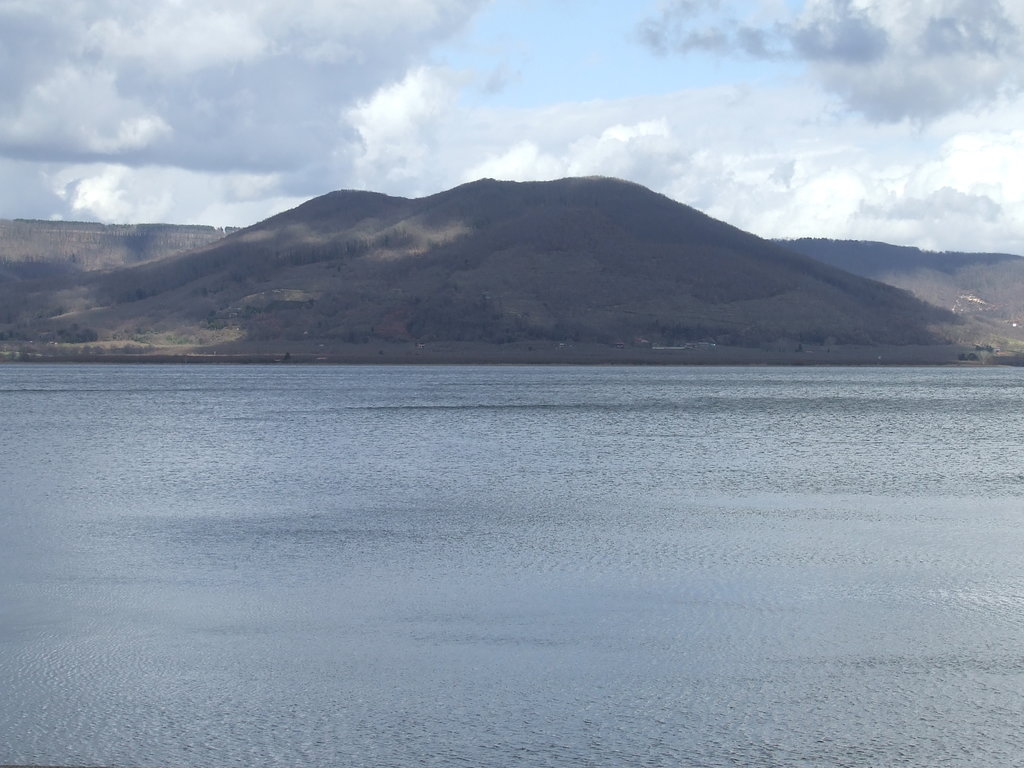
During the Pleistocene period, from around two and a half million years ago to 11,700 years ago, lava characterized by leucite began to come from the Vico volcano, which was absent from the lava from Mount Cimino.
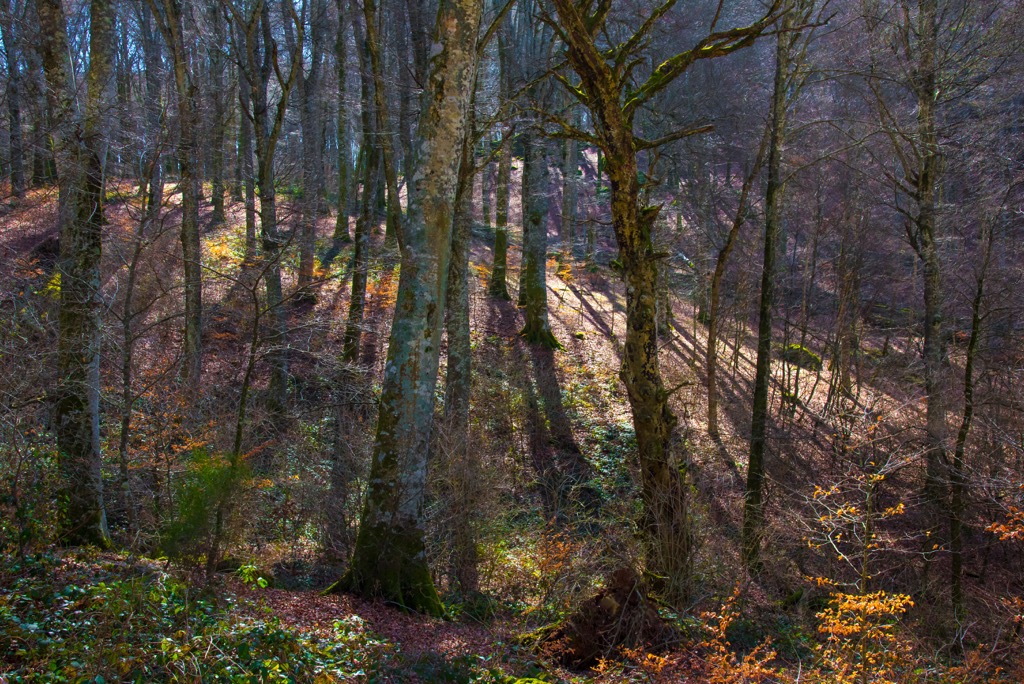
The Vico volcano alternated between pauses and violent explosions, resulting in the formation of tuffaceous rocks such as grey tuff with black slag. After a long period of intense volcanic activity, a volcanic-tectonic collapse occurred causing the formation of the caldera. Volcanic activity continues with alternating phases and today with secondary manifestations with examples such as the many thermo-mineral springs in the area.
The valley floor is mainly flat, but the inner side of the volcanic basin reaches a very steep slope. The rainfall here is one of the highest in Lazio, with water collecting from the inner slopes of the perimeter ring, from Monte Venere, and underground springs directly feeding the lake. The lake is one of Italy’s highest major lakes, with an elevation of 500 m/ 1,640 ft, and is drained by the Vicano river.
The area’s past volcanic activity led to the formation of the territory and left behind minerals and crystals in the rock of myriad colors and shades, some of which were first discovered in this area.
Lake Vico is home to a rich biodiversity, best known for its vast ancient beech forests and its waters full of birdlife.
The lake boasts rich water life with various species of fish, including pike, whitefish, and eel. Though the otter was present in the lake until the 1960s, it has since disappeared, being replaced by the invasive nutria species, imported from South America.
Lake Vico Nature Reserve is one of Lazio’s most important wintering and resting places for migrating birds. It offers shelter in the winter months to over 5,000 coots and wild ducks, including the tufted duck and mallard, pintail, gadwall, shoveler, and even great crested grebe, who frequent the shallow waters and reed beds.
In the open waters of the lake, you’re more likely to spot herring gulls and common gulls, especially during the winter season.
The woods of the nature reserve are home to martens, foxes, polecats, weasels, badgers, porcupines, and even the rare wild cat. Smaller mammals such as dormice, voles, wild mice, moles, and shrews also find shelter in the park's forests and woodlands.
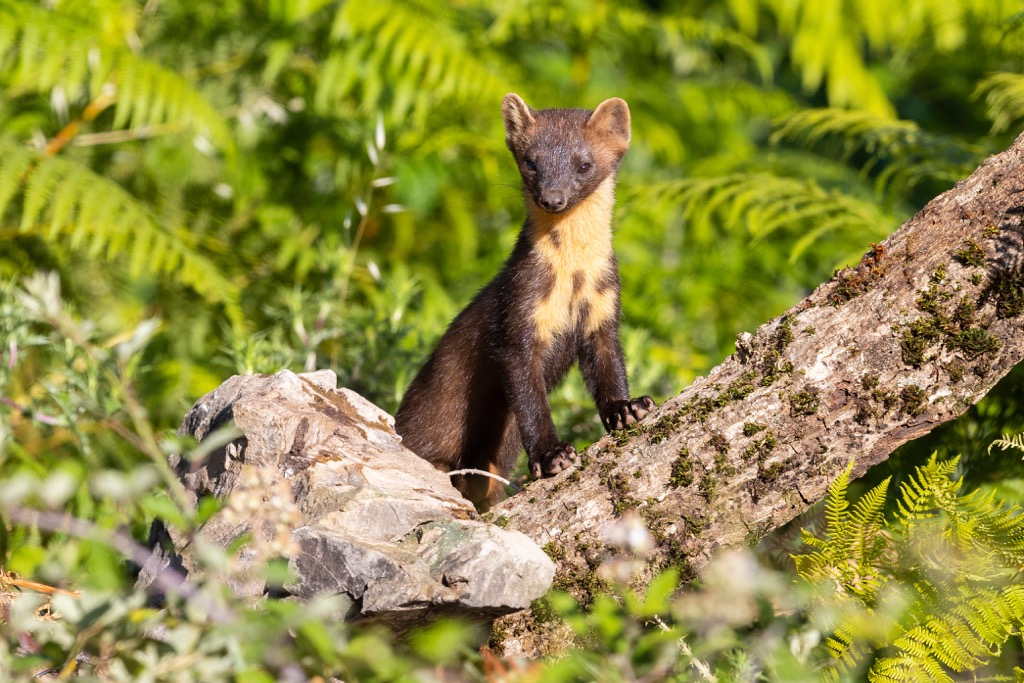
Look to the skies and you might spot birds of prey such as sparrow hawks, buzzards, peregrine falcons, and black kites, and in the woodlands birds such as the greater spotted and green woodpecker, that find food in the centuries-old trees.
A large part of the park is covered by woodland, which expands over 9 sq. km/ 3 sq. mi thanks to the park's abundant rainfall and rich soils. Ancient beech forests cover the slopes of Monte Fogliano and Monte Venere on the crater belt, whereas there are predominantly large Turkey oak forests on the inner slopes.
The beech forests in the park are of a much lower elevation than is typical in the Apennines, thanks to the favorable local climatic conditions. Other mixed woodland found in the park includes holm oaks, maples, hornbeams, ash trees, and elms with undergrowth of holly, hawthorn, and butcher’s broom. And finally, chestnut and hazelnut groves were introduced by humans and now provide shelter for numerous birds and animals.
Marshland is also typical in the nature reserve, the result of the lowering of the lake level due to construction. These marshy areas lie in the northernmost part of the basin and are surrounded by extensive grasslands, where livestock is farmed. Reeds grow around the entire perimeter of the lake, with some of the most extensive reed vegetation formation in Lazio.
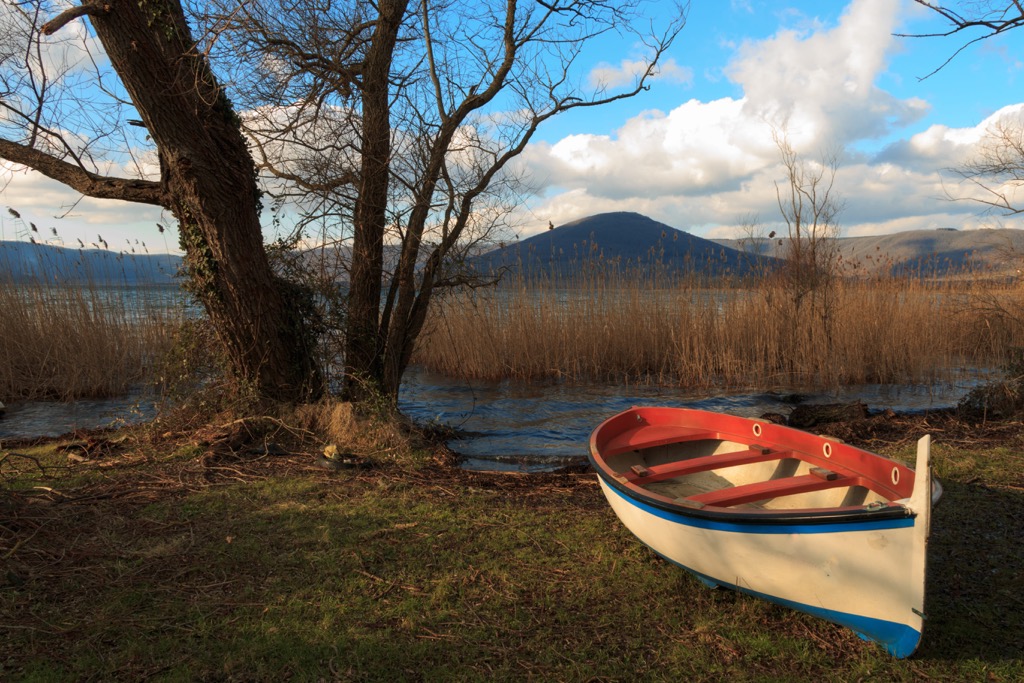
The park has been used over the centuries to cultivate typical products, such as hazelnuts and chestnuts. However, the area is best known for the local town of Caprarola, built on tuff rock, where the noble Farnese family built a spectacular pentagonal villa and fortress.
The villa was built by the architect Giacomo Barozzi da Vignola, known simply as Vignola, and became the summer residence of the Cardinal and his family in the late 1500s. The villa is open to the public and is full of interesting artifacts, paintings, a beautiful staircase, and rooms, including an impressive world map room.
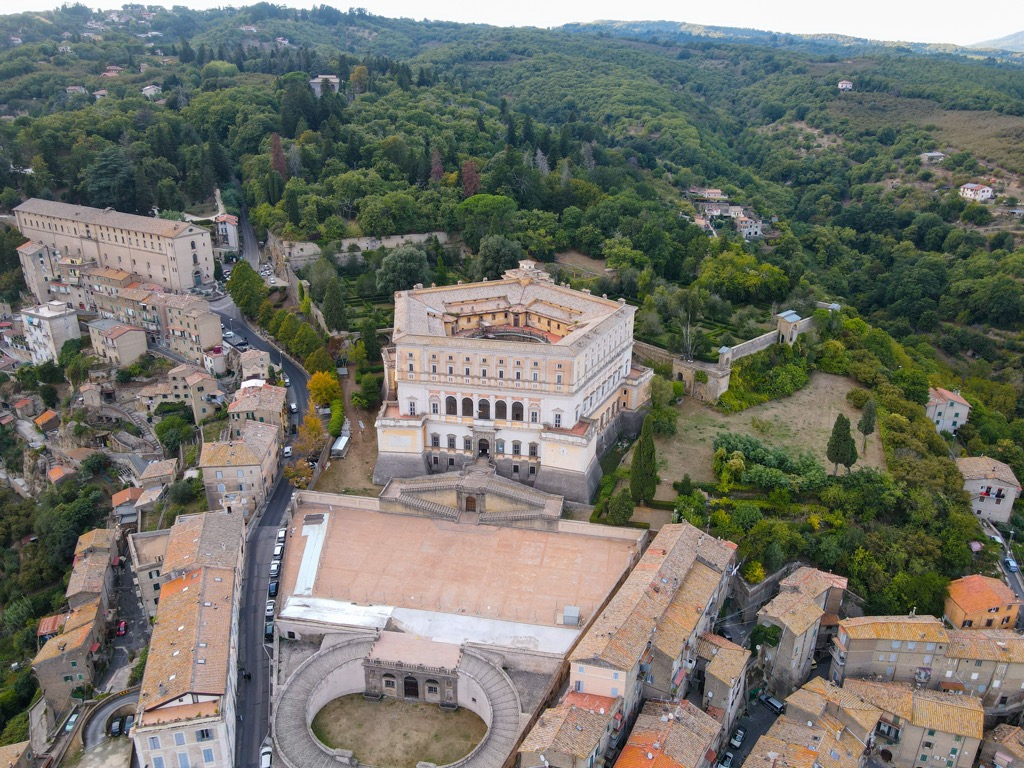
The fortress comes alive during the summer with concerts and cultural events, where you can enjoy breathtaking views across the surrounding landscape.
Other interesting historical buildings include the church of the Madonna della Consolazione, commissioned by Cardinal Odoardo Farnese, and Palazzo delle Scuderie Farnese, the current HQ of the Lake Vico Nature Reserve. You can also visit the Castello dei Prefetti di Vico and the church and convent of Santa Teresa, where you can admire paintings by Giovanni Lanfranco and Alessandro Turchi.
Hikers can find an interesting mix of walks in the Lake Vico Regional Nature Reserve, from short strolls along the lake shore to scrambles along the ‘Pozzo del Diavolo’ path which follows the remains of the volcanic crater. Challenging trails meander through the woodland before opening out into stunning views across the valley.
Several natural trails have been created in the park for educational purposes, crossing the most characteristic environments of the park. Among these, a path has been created specifically for the visually impaired where park information is written in Braille.
An intermediate four-hour loop hike that explores the different environments of the park, from the lake and woodlands to the park’s peaks. The trail covers 13 km/8 mi to the north of the lake. Start from a parking lot in the Faggeta del Monte Venere (beech forest) and enjoy wide woodland paths with plenty of shade before meeting the ‘devil’s well’ (Pozzo del Diavolo), a small cave. Then head up to the top of Monte Venere before following the path down to the lake.
Cross Roman countryside from Soriano nel Cimino to Cura di Vetralla along stage three of the Cammino Tuscia for 19 km/11 mi. Marked as route 103, this route takes around six hours from the Tiber to the Tyrrhenian sea, offering breathtaking panoramic views of Lake Vico, taking you through the beautiful woodland of Monte Fogliano, and onto a Via Francigena variant. The path then reaches the Hermitage of San Girolamo in Vetralla and the convent of Sant’Angelo.
The 39 km/ 24 mi Via Francigena Cimina variant route dates back to Roman times and takes around 11 hours in its entirety. The path deviates near Viterbo, heading towards San Martino al Cimino along the road known as the Via Cimino.
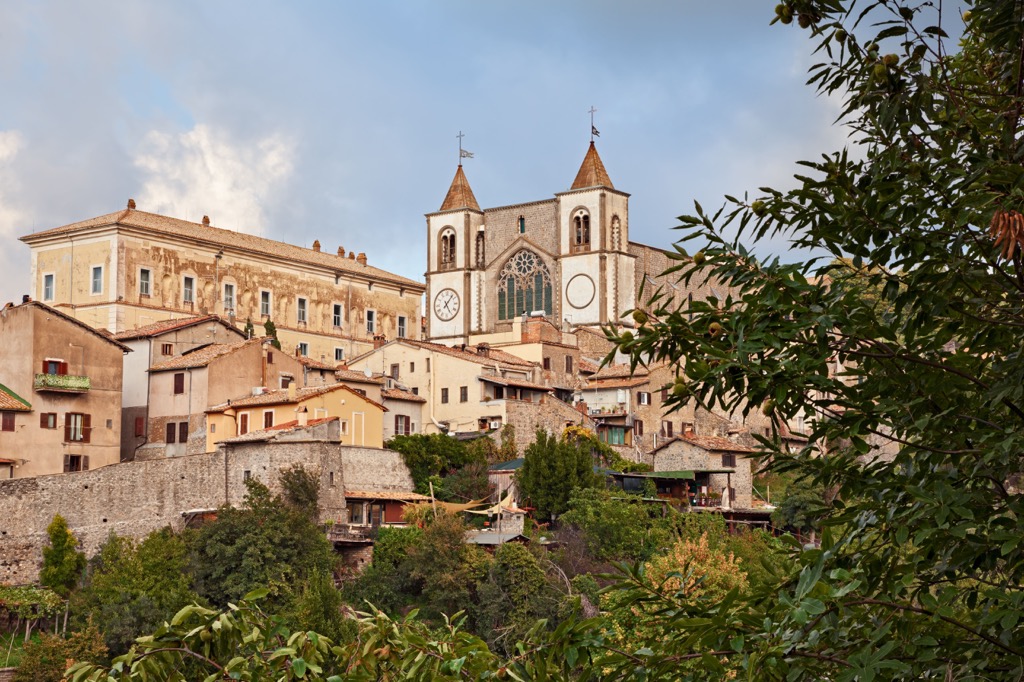
Along the route, you’ll pass ruins near Dogana Vecchia, an ancient border office located between the previous Papal states and the Farnese Duchy of Castro and Ronciglione in the sixteenth and seventeenth centuries BCE. Follow the path as you descend into the Vico valley, crossing beech forests and hazelnut groves, churches, and the historic center of Ronciglione.
An easy one-hour, 4 km/3 mi trail that runs alongside the lake, this path is great for spotting the rich aquatic birdlife of the lake. Enjoy views of the surrounding countryside and follow the path along the lakeside, stopping in the bird-watching huts along the way. The path can quickly become overgrown or flooded by rising water levels, so check accessibility with the Lake Vico Nature Reserve before you start.
Immerse yourself in the local countryside by staying at a local farm stay (agriturismo) or any of the surrounding towns for an authentic experience. There are plenty of small towns to enjoy the local area and some larger cities nearby to choose from, including Italy’s colorful capital city.
Just over an hour’s drive from Lake Vico Nature Reserve, Rome is the perfect spot for a stay in the area. The city’s sites will keep you busy, such as the world-famous Colosseum, Roman Forum, and Pantheon. Or enjoy walking along the beautiful cobbled streets of the city center, sampling the local cuisine, and taking an aperitivo with the locals in one of the many picturesque piazzas.
Use the city as a base to explore Rome’s beautiful surrounding countryside, with Lake Vico Nature Reserve, Parco Naturale Regionale dei Monti Simbruini, and Parco Naturale Regional dei Monti Lucretili all within an hour’s drive. Rome can be reached by an international airport and has train links to all other major Italian cities such as Florence, Milan, and Venice.

Just across the regional border, in the Italian region of Umbria, Terni is another great place to base a stay in the area. Here you can explore the beautiful trails of the Parco Fluviale del Nera (black river park) where you’ll find the spectacular Cascate delle Marmore, waterfalls created in ancient Roman times and now used to supply Lake Piediluco.
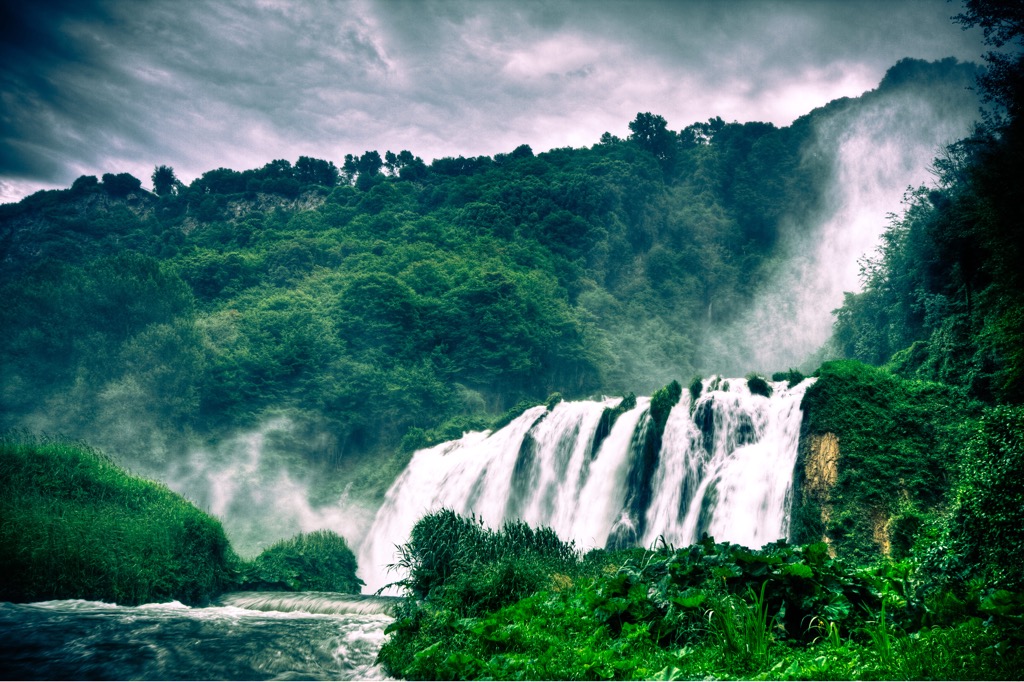
Admire the town center and visit historical buildings, such as the local ancient Roman amphitheater or Terni’s duomo, walk along the Nera river following footpaths that stretch for most of this part of the river, or head north to the pretty towns of Spoleto or Orvieto.

Visit the stately Farnese villa, built by Vignola as an impressive display of wealth by the Farnese noble family. Discover beautiful paintings, luxurious rooms, a huge garden, and a “world map room”. Visit the Santa Teresa church, or taste local delicacies such as pici and fettuccine, lake fish, and hazelnuts - which are celebrated with their very own festival in late August/early September.
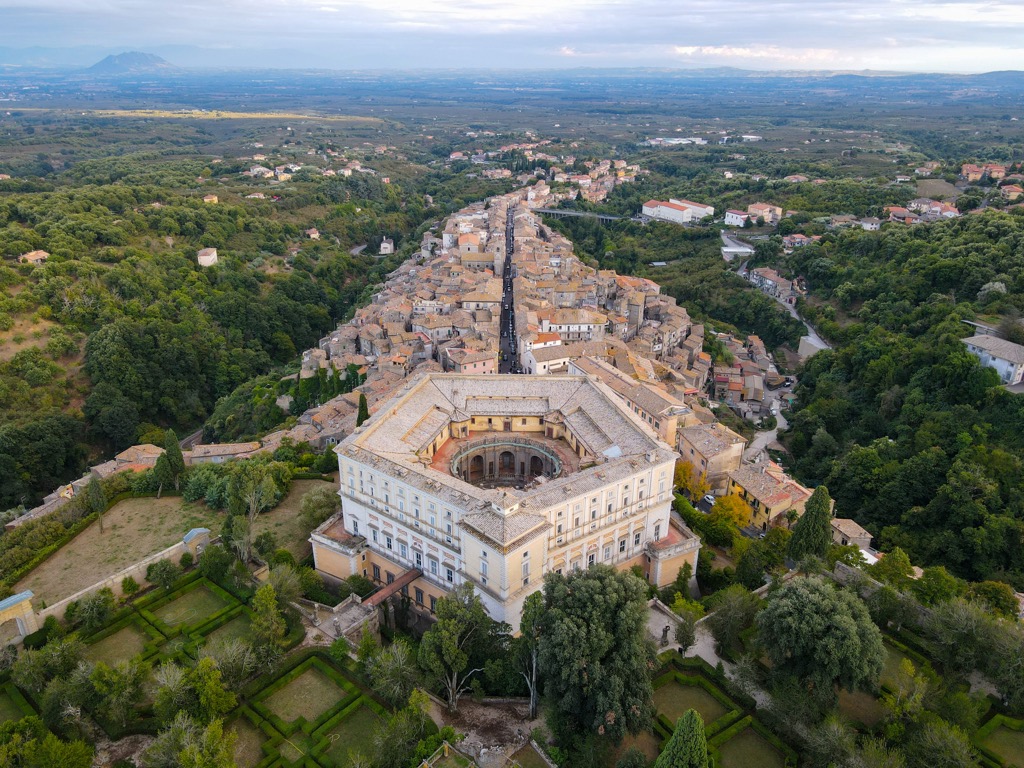
Explore Riserva Naturale Regionale Lago di Vico with the PeakVisor 3D Map and identify its summits.








